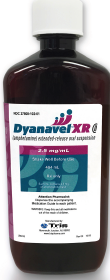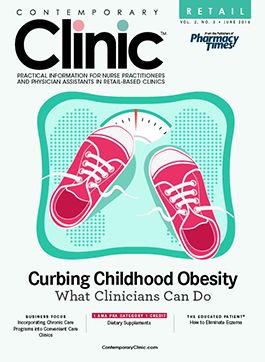Rx Product Updates (June 2016)
Read about the new Rx products featured in June 2016.

Tris Pharma
Indication:The FDA has approved Dyanavel XR, a central nervous system stimulant, for the treatment of attention-deficit/hyperactivity disorder in children 6 years or older. The recommended starting dose is 2.5 or 5 mg once daily in the morning. The dosage may be increased in increments of 2.5 to 10 mg/ day every 4 to 7 days until an optimal response is obtained.
Dosage Form:Extended-release oral suspension containing 2.5 mg of amphetamine base per mL
For More Information:trispharma.com

BASAGLARMarketed by:Eli Lilly and Company
Indication:The FDA has approved Basaglar (insulin glargine injection), a long-acting human insulin analog, for improving glycemic control in adults and pediatric patients with type 1 diabetes and in adults with type 2 diabetes. The dosage should be individualized based on metabolic needs, blood glucose monitoring, glycemic control, type of diabetes, and prior insulin use. Basaglar should be administered subcutaneously once daily at any time of day, but at the same time every day.
Dosage Form:Injection: 100 units/mL (U-100) in a 3-mL prefilled Basaglar Kwik- Pen delivery device
For More Information:basaglar.com

QUILLICHEW ERMarketed by:Pfizer
Indication:The FDA has approved Quilli- Chew ER (methylphenidate hydrochloride), a central nervous system stimulant, for the treatment of attention-deficit/hyperactivity disorder. For patients 6 years and older, the recommended starting dose is 20 mg orally, once daily in the morning. The dosage may be titrated weekly in increments of 10, 15, or 20 mg per day. A daily dosage above 60 mg is not recommended.
Dosage Form:Extended-release chewable tablets: 20 and 30 mg of methylphenidate hydrochloride (HCl), functionally scored. Extended-release chewable tablets: 40 mg of methylphenidate HCl, not scored
For More Information:pfizer.com/ products/product-detail/ quillichew_er

Knock Out Aches and Pains From Cold
October 30th 2019The symptoms associated with colds, most commonly congestion, coughing, sneezing, and sore throats, are the body's response when a virus exerts its effects on the immune system. Cold symptoms peak at about 1 to 2 days and last 7 to 10 days but can last up to 3 weeks.
COPD: Should a Clinician Treat or Refer?
October 27th 2019The Global Initiative for Chronic Obstructive Lung Disease (GOLD) defines the condition as follows: “COPD is a common, preventable, and treatable disease that is characterized by persistent respiratory symptoms and airflow limitation that is due to airway and/or alveolar abnormalities usually caused by significant exposure to noxious particles or gases.â€
Diabetic Ketoacidosis Is Preventable With Proper Treatment
October 24th 2019Cancer, diabetes, and heart disease account for a large portion of the $3.3 trillion annual US health care expenditures. In fact, 90% of these expenditures are due to chronic conditions. About 23 million people in the United States have diabetes, 7 million have undiagnosed diabetes, and 83 million have prediabetes.
What Are the Latest Influenza Vaccine Recommendations?
October 21st 2019Clinicians should recommend routine yearly influenza vaccinations for everyone 6 months or older who has no contraindications for the 2019-2020 influenza season starting at the end of October, according to the Advisory Committee on Immunization Practices.
What Is the Best Way to Treat Pharyngitis?
October 18th 2019There are many different causes of throat discomfort, but patients commonly associate a sore throat with an infection and may think that they need antibiotics. This unfortunately leads to unnecessary antibiotic prescribing when clinicians do not apply evidence-based practice.
